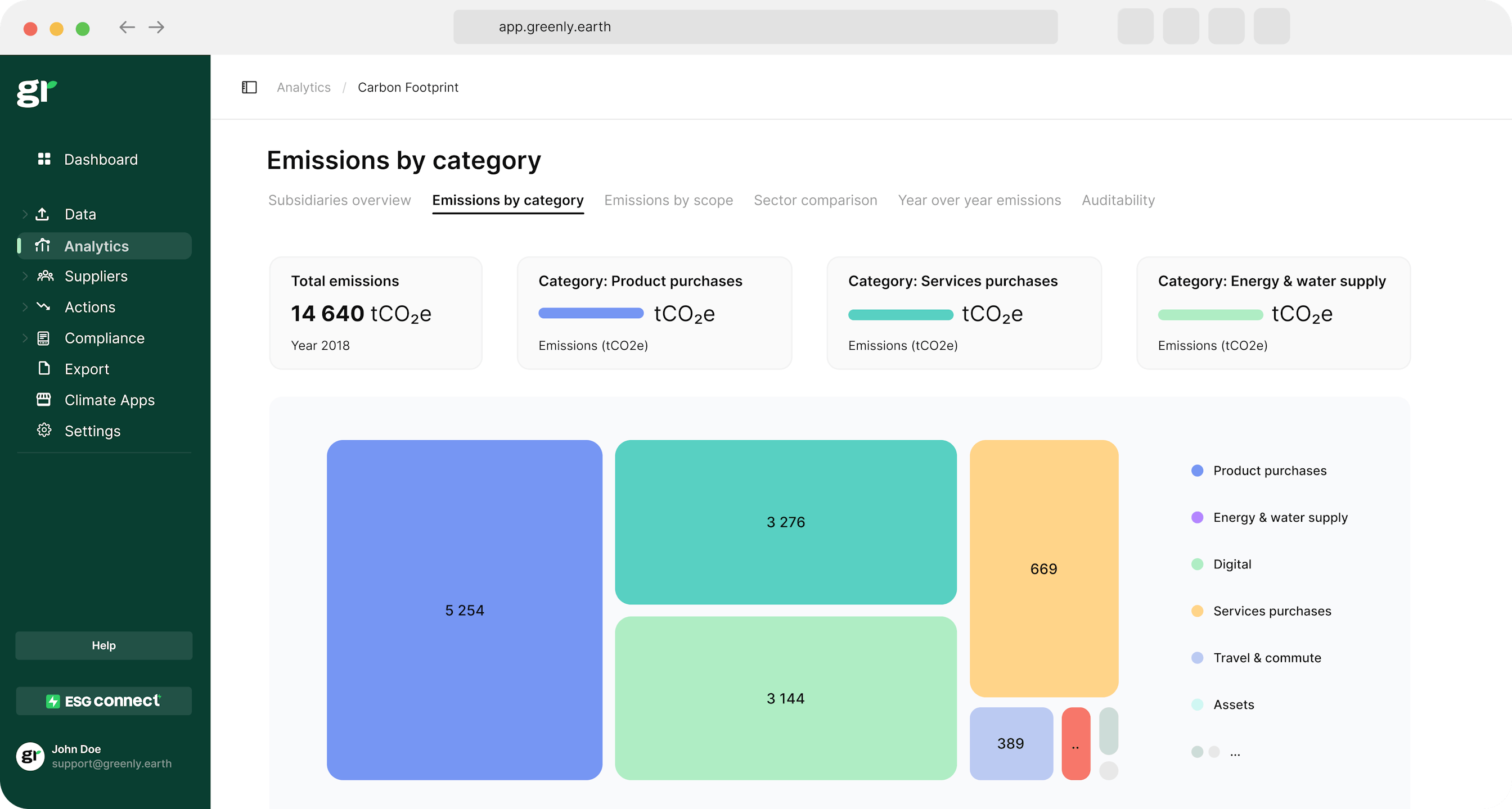
California Climate Accountability Package: SB253, SB261, & SB252
What is the California Climate Accountability Package, and how do SB 253 and SB 261 (SB 219), and SB 252 help the state work towards their environmental goals?
ESG / CSR
Industries



With the U.K. Environment Act of 2021, the Ten Point Plan, and the CMA’s new guidelines for the U.K. to meet their environmental goals – the U.K. has been putting their best foot forward to be at the top of their environmental impact reduction game as of late, and the Energy Savings Opportunity Scheme, or the ESOS, adds on to the list of climate change efforts by the United Kingdom.
Energy audits are becoming an important part of any sustainable business seeking energy saving opportunities and working to reduce significant energy consumption – whether it be to attract new stakeholders or reduce operational costs.
However, it can prove challenging to identify areas of significant energy use and implement energy saving measures as industrial processes make it challenging to follow a mandatory energy assessment scheme and ensure responsible undertaking of energy efficiency.
What is the Energy Savings Opportunity Scheme, or ESOS, and how can it help the U.K. reduce their energy consumption and ultimately, fight against climate change?
👉 In this article, we'll explain the importance of the Energy Savings Opportunity Scheme, how an ESOS assessment works, and how your company can ensure ESOS compliance and save energy.
In accordance with the EU Energy Directive, the Energy Savings Opportunity Scheme, ESOS – was implemented back in 2014 prior to Brexit as a program to promote compulsory energy assessments for organizations throughout the United Kingdom that meet specific criteria.
👉 The U.K. Government requires larger companies to comply with ESOS in correlation with the country’s newfound efforts to significantly reduce carbon emissions and employ energy-saving tactics.
In short, if companies reduce their energy consumption, it means they will also directly reduce their carbon emissions – ultimately leading to more business revenue, investor interest, and security while avoiding waste at the same time.
Not all companies throughout the United Kingdom are instructed to comply with the Energy Savings Opportunity Scheme, such as small to medium enterprises. Therefore, if you’re the co-founder of a start-up with ten employees in the U.K. – you’re free from needing to report to ESOS.
Currently, any company that has an annual revenue of over €50 million, a yearly balance sheet of €43 million, over 250 employees, and a deadline to comply with ESOS phase three by 5 June 2024 are required to continue reporting to ESOS. Companies that are required to provide ESOS with an energy report should convert their income in British pounds to the Euro to determine if they qualify for ESOS.
💡 ESOS mainly refers to large businesses that are established in the United Kingdom, but it doesn’t exclude large non-profit organizations from complying on occasion as well.
Remember, the date for the third compliance period of ESOS (due 5 June 2024 with enforcement action to ensue on 6 August 2024) is relevant for companies with:
The Energy Savings Opportunity Scheme doesn’t require small to medium sized businesses to comply with ESOS. This can be seen as one of the inherent downsides of the Energy Savings Opportunity Scheme. Many companies who remain as small to medium enterprises can still emit excessive amounts of carbon emissions and use an exorbitant amount of energy.
Think of it this way: a watermelon, while massive, isn’t very calorically dense – but a chocolate chip cupcake with peanut butter frosting and sprinkles may have more calories than several pieces of watermelon. Long story short, the size of a company doesn’t determine the amount of energy they use. ESOS should strive to require companies of all sizes to comply with the Energy Savings Opportunity Scheme, and the good news is – ESOS is trying their best to change this.
If a company is covered by an ISO 50001, an ESOS assessment isn’t needed – but your organization must notify the Environment Agency to prevent getting into trouble with ESOS.
Here is a breakdown of the various energy intensity ratios and phases of and ESOS assessment and energy audit:
| Phase | Description | Compliance Date |
|---|---|---|
| Phase 1 | Initial phase of ESOS requiring large organizations to conduct an energy audit to identify cost-effective energy-saving measures. | 5 December 2015 |
| Phase 2 | Second phase requiring repeat of energy audits, with updated measures and progress tracking on previous recommendations. | 5 December 2019 |
| Phase 3 | Current phase, continuing the process of periodic energy audits and implementation of identified energy-saving measures. | 5 December 2023 |
| Phase 4 | Future phase, expected to further enhance energy efficiency measures and possibly integrate more stringent requirements. | 5 December 2027 |

Otherwise, if your company qualifies for the Energy Savings Opportunity Scheme, then an ESOS assessment is required. Your company should appoint someone to be in charge of completing the ESOS assessment. This assessment is done in a few steps, the first one being to calculate your company’s total energy consumption – which must include the energy used by your organization’s office spaces, industrial activity, and transportation methods.
Next, your organization should strive to recognize the areas for energy consumption improvement. In other words, clearly specify in your ESOS assessment the activities that account for the most energy consumption in your organization.
Lastly, it’s imperative to send your ESOS assessment before the proposed deadline, and that your company keeps records of submitted your assessment to ESOS.
👉 Remember, ESOS will take into account other efforts to improve energy management – such as by utilising ISO 50001, Green Deal Assessments, and other energy certificates when trying to determine the amount of energy savings achieved.
Organizations who meet the requirements listed below must complete their assessment through the ESOS process.
Participants obligated to report to the Energy Savings Opportunity Scheme ESOS must:
If your UK company has an an annual turnover exceeding €50 million and an annual balance sheet total exceeding €43 million, you may qualify for ESOS obligations, information on energy use, and require the development of an energy saving scheme in accordance with the previous ESOS compliance date and future dates to notify compliance.
It is important to appoint an ESOS lead assessor and a board level director to review your ESOS assessment to ensure that all energy saving opportunities identified have been addressed for optimal energy efficiency and can be demonstrated as a genuine effort – and not for profit bodies.
This step involves data collection on your energy intensity ratios and consumption across your corporate group – such as transport energy, industrial processes, and the energy use from your offices.
💡 Remember, it is important to ensure that your data covers a 12-month time span from the date in which your company receives a compliance notification.
Areas which account for at least 90% of your total energy consumption should be included in your energy audit, in addition to efforts to collect data on potential solutions to reduce current energy usage.
In addition to this, your ESOS report should include ideas to employ additional energy efficiency measures.
Certifications such as an ISO 50001, limited liability partnerships, and other joint ventures to comply with ESOS regulations may be considered in your ESOS assessment for your entire UK operation in terms of future energy savings opportunities.
Therefore, it is important to assemble something similar to a portfolio or resume demonstrating your approved professional body register certifications relevant to ESOS audits, ESOS phase 3, and any other large undertaking to improve energy consumption.
Efforts to comply with ESOS don't stop once your compliance period has passed, but rather – it's the start of your newfound efforts to improve upon energy savings in the long-term.
💡 While this isn't compulsory for a successful business to implement their ideas reported to ESOS, energy savings can help to improve energy efficiency and reduce operational costs – both of which can open the doors for new opportunities to implement greater sustainable measures.
Given one of the primary goals of the Energy Savings Opportunity Scheme is to reduce energy consumption, and that the program has been intact for nearly a decade – it would seem probable to say that ESOS has made a difference in the energy consumption across large businesses throughout the United Kingdom.
Unfortunately, ESOS presents a vital flaw that prevents companies from actually doing anything to reduce their energy consumption – despite the fact that all companies required to comply with ESOS must delineate the areas where energy consumption could be reduced, ESOS does not mandate them to actually implement these new measures.
💡 Think of ESOS as getting a test score back on a test. Completing the ESOS assessment will inevitably require the company to be evaluated on their energy consumption reduction tactics, but illustrating where improvement can be made does not mean that they will make the changes necessary to mitigate excessive energy consumption.
ESOS has certainly made energy consumption reporting and monitoring the new norm for large businesses throughout the U.K., but since it doesn’t actually require those energy consumption reduction tactics to be made – there is no tangible evidence that ESOS has helped to reduce energy consumption throughout the United Kingdom.
Besides the fact that ESOS doesn’t require companies to actually implement the energy consumption reduction methods provided in their ESOS assessments, the Energy Savings Opportunity Scheme has a few other setbacks.
The U.K. recognises that there is room for improvement concerning ESOS, and in fact – they have recently published a detailed report delineating all of the components to be adjusted for better energy-consumption management. For instance, the report explains how ESOS reports could be improved and conveys the need for more standardised information – such as making the reporting requirements stricter, requiring participants of ESOS to use metrics, and address the discrepancies that could occur given companies are only meant to comply with ESOS every four years.
Other components of ESOS that the U.K. is seeking to improve includes how ESOS complies with the United Kingdom’s goals of achieving net-zero emissions, and how companies required to comply with ESOS can discover new ways to use clean energy and reduce their emissions even further. Also, the U.K. government wants ESOS to contribute to the increase of transparency throughout companies to help prevent allegations like greenwashing and promote trustworthy business relationships.
👉 Currently, ESOS only requires companies with over 250 employees to participate, but given the United Kingdom’s new goals to drastically reduce emissions and their overall environmental impact – ESOS has delineated in their new report their desire to extend ESOS to medium-sized companies as well in order to increase the efforts to reduce the country’s overall carbon footprint.

ESOS isn’t the only method intact by the U.K. government as a method to reduce emissions and the country’s impact on the environment, but rather, it joins a long list of many programmes already put in place.
For instance, the U.K. Environment Act of 2021 is an environmental plan put in place to help the country bridge the gap between central and local governments to better implement regulations to benefit the overall state of the environment: like reducing waste, improving measures for recycling by introducing fines for British citizens who don’t, improving air and water quality, and preserving nature and biodiversity.
The U.K. has also had their Greenbelt in place for a long time, which is a large body of land protected by local planning authorities to ensure that urbanization does not make it subject to deforestation – which only causes more carbon emissions and a plethora of environmental issues.
💡 In fact, the U.K.’s Greenbelt Policy has encouraged other countries around the world to implement their own Greenbelts to help prevent further urban sprawling and deforestation.

Another strategy created by the U.K. government as a country-wide effort to reduce emissions and lead the way towards net-zero activities is The Ten Point Plan.
This emission reduction plan initially implemented by Boris Johnson provides an overwhelming £12 billion to promote a Green Industrial Revolution throughout the United Kingdom, and set new impressive goals towards increasing the use of clean energy, encouraging carbon-free transportation, and building sustainable offices and residences to increase energy efficiency throughout the country.
👉 The Ten Point Plan is meant to help the U.K. achieve their net-zero emission targets by 2050, and help the country recover financially following the Covid-19 pandemic.
The Energy Savings Opportunity Scheme is certainly a step in the right direction for the U.K. to encourage large businesses to reduce their energy consumption and overall emissions, but it presents some flaws that prevent it from begin as successful as it could be – most notably, the fact that only large companies are required to comply with ESOS, and that they only have to do it once every four years.
💡 Small and large enterprises alike must seek new ways to utilize many of the ideas expressed in the Ten Point Plan to mitigate the use of fossil fuels, like the use of nuclear or clean energy. In addition to this, U.K. citizens need to take responsibility and opt to renovate their homes to be more energy efficient.

ESOS can only do so much to help the U.K. reduce their energy consumption, and while it is good for companies across the United Kingdom to have this compulsory incentive – the country, let alone the world, won’t see an improvement in regards to climate change unless more stringent measures are taken towards any and all guilty parties.
The rest of the world and the U.K. is trying to up their environmental game in order to fight against climate change, and ESOS should too.
If reading this article about the Energy Savings Opportunity Scheme, ESOS, and how it can help to reduce electricity consumption and overall emissions has made you interested in reducing your carbon emission to further fight against climate change – Greenly can help you!
Greenly can help you make an environmental change for the better, starting with a carbon footprint assessment to know how much carbon emissions your company produces.
Click here to learn more about Greenly and how we can help you reduce your carbon footprint.
